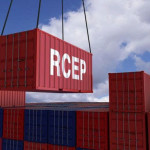Total number of posts 387.

Growth of the Semiconductor Industry in ASEAN
The global semiconductor industry, a cornerstone of modern technology, is undergoing a significant transformation with ASEAN (the Association of Southeast Asian Nations) emerging as a prominent player. Geopolitical tensions between the US and China have opened opportunities for the region, with key contributors like Singapore and Malaysia leading the way.
ASEAN, in its effort to diversify the global supply chain, has recorded impressive growth. Total semiconductor exports from the region reached $268.8 billion in 2023, accounting for 23.6% of the global market. A remarkable 41.6% increase in exports from 2018 to 2023 underscores the sector's sustainable growth in this area.
Lessons from Taiwan and South Korea
ASEAN can draw valuable lessons from two prominent semiconductor leaders: Taiwan and South Korea. Taiwan established its semiconductor foundation in the 1980s with the creation of the Hsinchu Science Park and the Taiwan Semiconductor Manufacturing Company (TSMC), which now controls over 50% of the global market. Similarly, South Korea, supported strongly by its government, has developed giants like Samsung and SK Hynix.
The key takeaway is the strategic investment in both hard and soft infrastructure and the close collaboration between academia and industry. ASEAN member countries, especially Singapore, Malaysia, and Vietnam, need to establish specialized research and training centers to nurture a high-quality workforce.
Opportunities and challenges for Vietnam and ASEAN member countries
Vietnam, with its semiconductor development strategy through 2030 and a vision for 2050, is striving to leverage its young workforce and abundant rare earth resources. However, challenges such as a lack of high-quality human resources, underdeveloped infrastructure, and administrative hurdles need to be addressed.
Experts like Dr. Loi Nguyen from Marvell highlight the importance of collaborating with international organizations to train chip design engineers. Moreover, a stable electricity supply and localized supply chains will be critical to Vietnam’s competitiveness in this field.
Other ASEAN countries, such as Malaysia and Singapore, are also ramping up efforts. Malaysia’s national semiconductor strategy aims to invest $106 billion in advanced technologies. Singapore is expanding its wafer fabrication zones and enhancing business support services.
Meanwhile, Indonesia, with its abundant raw materials, is developing a supply chain from raw material extraction to production. This regional competition not only elevates ASEAN's position in the global semiconductor market but also fosters collaboration to create an integrated value chain.
Towards the future
One of the priorities economic deliverables proposed by Malaysia, the Chair of ASEAN 2025, and currently under domestic consultations by ASEAN member states, is the ASEAN Framework for Integrated Semiconductor Supply Chains (AFISS). AFISS is a significant step towards positioning ASEAN as a unified production hub, encompassing everything from mineral extraction to packaging and distribution. Close coordination among member states, combined with strategic investments in R&D, infrastructure, and education, will enable ASEAN to emerge as a technological powerhouse.
The semiconductor industry presents vast opportunities, but to fully capitalize on them, Vietnam and other ASEAN countries must swiftly address their internal limitations. With the right investments and strategies, ASEAN can establish itself not only as a manufacturing hub but also as a source of innovation in the global high-tech industry.
Source: from various sources.














